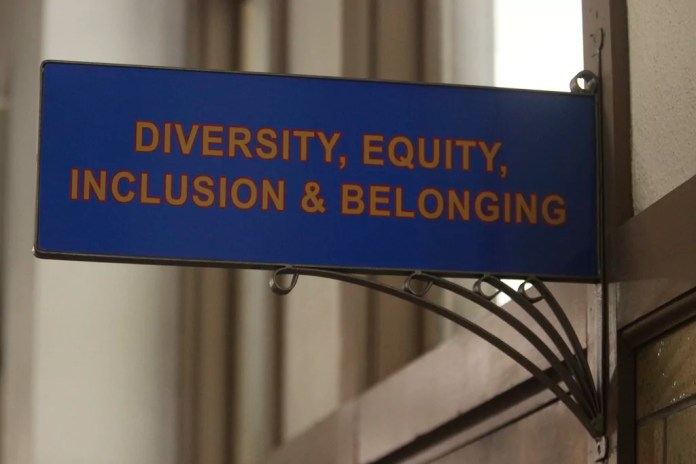The Ongoing Failure Of Affirmative Action
in “The Affirmative Action Myth: Why Blacks Don’t Need Racial Preferences to Succeed,” Jason Riley critiques affirmative action policies through a clear and analytical lens.This book serves as a sequel to his earlier work, “Please Stop Helping Us,” and challenges the notion that racial preferences are necessary for black success, arguing instead that meritocracy should prevail.
Riley discusses the context of affirmative action in the current landscape dominated by critical race theory and figures like Ibram X. Kendi and Robin DiAngelo. He debunks their arguments, highlighting that historically, Black upward mobility occurred even under systems of discrimination. notably, he references the 2016 film “Hidden Figures” to showcase a time of stability and success in Black communities that contradicts contemporary narratives.
The critique extends to bureaucracies and policies that Riley believes have distorted the original intent of civil rights laws, such as the Civil Rights Act of 1964, which aimed for color blindness rather than quotas. He argues that this shift has occurred despite societal opposition to race-based preferences. Acknowledging that his work isn’t a historical account but rather a policy analysis, Riley calls attention to the unintended consequences of affirmative action, including stigmatization and mismatch in academic settings.
The author also reflects on Senator Barry Goldwater’s stance during the civil rights movement, alongside the perspectives of other Black voices, revealing a complex narrative of support and opposition to civil rights legislation. Riley’s book presents a case for dismantling affirmative action in favor of truly equitable and constitutional practices. Mary Grabar, a scholar and commentator, provides this summary, emphasizing the relevance of Riley’s beliefs in today’s discourse on race and policy.
With The Affirmative Action Myth: Why Blacks Don’t Need Racial Preferences to Succeed, Wall Street Journal columnist Jason Riley has written another clear-eyed analysis of affirmative action policies. This latest book serves as a follow-up to Riley’s 2014 title, Please Stop Helping Us: How Liberals Make It Harder for Blacks to Succeed, and both are lucid, well-written arguments from a black perspective against special considerations.
Much has happened in the intervening nine-plus years since Please Stop Helping Us — particularly the emergence of critical race theory and the host of pseudo-intellectuals promoting it, such as Ibram X. Kendi, Robin DiAngelo, and Nikole Hannah-Jones. Riley quickly debunks these people and the projects they promoted, including the 1619 Project, the campaign for reparations, and the dubious research regarding “redlining,” upon which arguments for reparations are based. Black home ownership between 1940 and 1980, like many measures of advancement, rose at a greater pace than it did for whites.
Indeed, the postwar period saw “black upward mobility” — even amidst “laws, policies, and customs that openly discriminated against blacks.” As an illustration, Riley refers to the popular 2016 movie Hidden Figures, based on the book by Margot Lee Shetterly about three black female mathematicians working for NASA in the 1950s and 1960s. Shetterly’s “sketches of black America in the early and middle decades of the twentieth century,” Riley writes, “may surprise readers in the twenty-first century who have come to associate black communities with crime, violence, underperforming schools, empty lots, solo parenting, and high levels of unemployment.”
As a counterpoint, Riley recounts from Shetterley’s book a description of the East End section of Newport News, Virginia, in 1943, where Dorothy Vaughan moved to start her job at Langley Memorial Aeronautical Laboratory. It was “populated by stable Negro families in well-maintained homes, thriving local businesses, and a growing middle class.” On the corner of the block where Vaughan lived, “a pharmacist had purchased a lot with plans to open the city’s first Negro pharmacy.” A new hospital, Whittaker Memorial, “organized by black doctors and constructed by black architects,” had just opened.
But it was not only Shetterly who made such observations. The conservative black columnist George Schuyler (of the Pittsburgh Courier) discovered during his 1925-26 tour through the South that black doctors and dentists were treating white and black patients in spite of Jim Crow. Blacks owned valuable real estate and businesses. It was the first of many trips to the South from his Harlem base.
But Schuyler’s 1948 tour, “What’s Good about the South?” drew flak for reporting not only the obviously bad (de jure segregation and unequal funding to black schools), but also the good — the ownership of vast tracts of land by black farmers, whites patronizing black-owned stores, and friendly relations.
Riley offers a plethora of research on the harm done by anti-Constitutional affirmative action, such as stigmatization and mismatch in college admissions. But he repeats the commonplace argument that the idea of color-blindness had informed the civil rights movement of the mid-1960s and was transformed into “numerical requirements” by the 1970s — which malingered even as a larger number of blacks said they were being harmed by affirmative action than helped by it.
Riley blames bureaucrats, judges, politicians (who win elections by making people “angry and paranoid”), “left-wing elites” (the most likely beneficiaries), and “intellectuals with self-serving agendas” (as I have witnessed in academia). The shift occurred “despite the broad unpopularity of race preferences as evidenced by opinion surveys, and it is likely to continue for the foreseeable future, notwithstanding the Supreme Court’s [2023] ban on affirmative action,” he writes pessimistically.
How did we get to this point? Riley blames bureaucracies like the Equal Employment Opportunity Commission (EEOC) and the courts for distorting the 1964 and 1965 Civil Rights Acts, both presumably introduced with pure intentions. Those who opposed the 1964 Act, according to his account, were “committed segregationists” like Robert Byrd and Richard Russell, white and Southern, naturally.
The lawmakers who backed the Civil Rights Act of 1964, Sens. Hubert Humphrey, Joseph Clark, and Clifford Case, “insisted that the legislation categorically prohibit racial quotas and any requirement that schools and employers engage in race-balancing. The goal was not to replace a Jim Crow system that discriminated against blacks with one that targeted other groups. Rather, it was to dismantle de jure segregation and establish a doctrine of color blindness in accordance with the Fourteenth Amendment of the U.S. Constitution.” Riley’s claim that Byrd and Russell would never support the bill no matter what kind of language was inserted implies that the only reason for opposition was support of segregation.
But that is not the case. Schuyler, a radical integrationist all his adult life, was opposed to the act. He asked, why not simply enforce the 14th Amendment?
The answer usually is that there was no enforcement mechanism. Enter the EEOC, along with the Civil Rights Act. Presumably, the members of this bureaucratic body would be fair-minded individuals who would discern whether a workplace’s lopsided racial makeup was “intentional” or not. Judges, pure of heart, would apply the same standards.
Riley notes Christopher Caldwell’s conclusion in The Age of Entitlement that the lawmakers “who opposed the legislation proved wiser about its consequences than those who sponsored it.”
Senator Barry Goldwater was one. Amazingly, neither Caldwell nor Riley cites him. Goldwater was supported by Schuyler and other prominent blacks, such as the publisher of the Butler County [Ohio] American and of The Jackson Advocate, although one would never know this from historical accounts.
Most newspapers falsely portrayed Goldwater as opposed to civil rights. But Schuyler, recalling that Goldwater integrated schools in Phoenix (as a member of the city council) and the National Guard, among other things, contrasted him to Lyndon Johnson, who voted “against civil rights again and again and again.” Schuyler called Goldwater “an honest, straightforward man who does not gull the mob and shift ground to cadge votes,” unlike “the charlatanry of the likes of Roosevelt and Kennedy.”
The late Lee Edwards also recounted Goldwater’s actions, for which Goldwater received the Phoenix Urban League’s Humanitarian Award in 1991, an award long overdue considering that his efforts went back to at least the 1940s. But 1964 was the year of “the seething emotional cauldron that culminated in the Civil Rights Act,” as the now-forgotten Lionel Lokos recounted. Goldwater was “denounced as an ally of Southern racists.” And even before the Civil Rights Act was passed, there were statements by those dubbed “civil rights leaders” indicating that more would be needed than equal protection under the law if peace were to be maintained.
Goldwater, who had voted for the 1957 and 1960 bills, wanted to vote for the 1964 bill. He sought amendments several times for clauses II and VII, on public accommodations and employment, respectively, which he considered unconstitutional. These amendments were brought up and went down to defeat, “like a row of ninepins,” as The New York Times put it.
While one can dispute how Riley handles this issue, ultimately Riley’s book is not a history of the Civil Rights Act of 1964. It is, rather, an analysis of policy, and a very good one.
Only in the area of civil rights do putative conservatives argue for “bending the Constitution.” The Affirmative Action Myth confirms Goldwater’s prediction from the Senate floor: “For this great legislative body to ignore the Constitution and the fundamental concepts of our governmental system is to act in a manner which could ultimately destroy the freedom of all American citizens, including the freedoms of the very persons whose liberties are the major subject of this legislation.”
Mary Grabar, Ph.D., a resident fellow at The Alexander Hamilton Institute for the Study of Western Civilization, is the author of “Debunking FDR: The Man and the Myths” (November 2024), “Debunking The 1619 Project,” and “Debunking Howard Zinn.” She taught college English for 20 years and founded the Dissident Prof Education Project (DissidentProf.com). Her writing can be found at marygrabar.com.
" Conservative News Daily does not always share or support the views and opinions expressed here; they are just those of the writer."




